I'm leaking all my best Biryani secrets tips that I've learned from friends, and people around me. Please give me a thumps up in comment if it helps.
Biryani is a feast and making it perfect is all about practice. These tips will help you know where to start and which areas to work on to get that perfect Biryani rice.
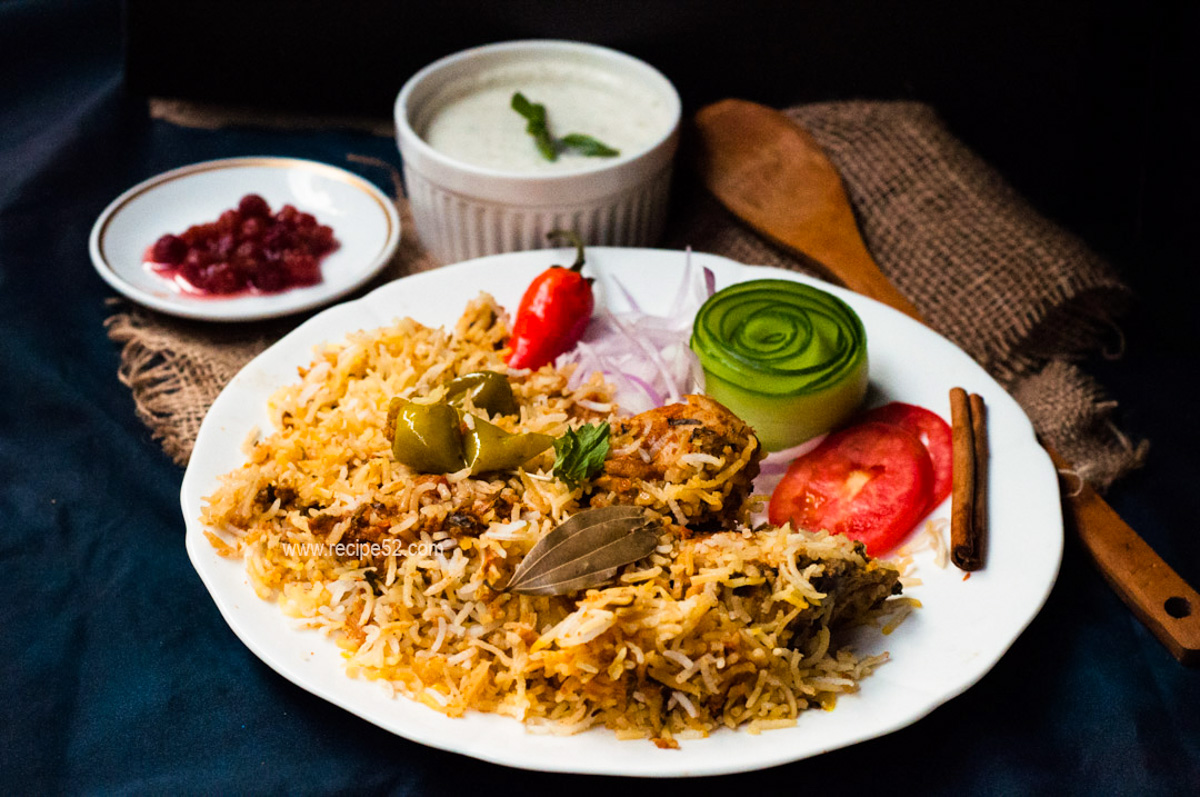
It is South Asian rice dish, made with layers of aromatic rice, meat, fried onions and yogurt and/or tomato. Ghee or oil is drizzled from topped and then the Biryani pot is sealed for steaming or 'Dum'.
Classification
Biryani is so popular is South Asian communities that every region and every family have their own version.
Biryani needs a type of meat or main ingredient like chicken, mutton, lamb, beef, vegetable, fish , prawn, shrimps, meat balls (kofta), bone marrow (nalli) and more.
| Region | Main Ingredient | Spice blend | Techniques |
| Some Biryani are named after the region in which it is developed like Sindhi Biryani, Bombay Biryani or Hyderabadi Biryani. | Many Biryani are named after the main meat or vegetable used. Like mutton Biryani, Beef Biryani , fish Biryani, nalli Biryani etc. | Few Biryani are named after spice blends used like Tikka biryani, Tandoori Biryani, white biryani. | Other Biryani are named after techniques used to make like Dum Biryani (steaming), Potli biryani (spice bag), kacha gosht ki biryani. |
So a biryani recipe is combination all 4 factors, region, main ingredient, spice blend and technique making a huge variation in biryani recipes and so you could never ever get bored of it.
My city 'Karachi' is famous for its Biryani throughout the world. Biryani is served here in almost every occasion. In fact, for most families Biryani is fixed on Friday Menu or at least Sunday. I can't think of living without Biryani for more than 10 days. So that's how dear Biryani is for Karachiites and me.
Pulao vs Biryani
| Biryani rice is boiled first and then layered with cooked meat, fried onions, stew, etc. | No Layering is required, meat is cooked first then soaked rice is added to the meat. |
| Meat and rice are cooked separately and then assembled together before dum. | Soaked rice is directly added to pulao pot along with cooked meat, gravy, and water and everything cooks together in one pot. |
| Biryani has white and yellow rice grains. | Pulao rice grains are all of the same color. |
| Some onions and korma gravy is also visible. | The color depends on the spices and ingredients used. |
Secret Tips
1. Rice to Meat Ratio
Having a general ratio of meat to rice before hand will keep you in pro position. You'll never face that meatless only rice stage of biryani pot when biryani about to be consumed completely. Sometimes, you have so much meat but everyone's asking for juicy biryani rice .
Golden Ratio
For rice measurement simple rule is to take equal quantity of meat and rice by weight i.e 1:1 ratio. That means 1 kg meat (chicken, lamb or beef) for 1 Kg rice.
For meat lovers biryani
If you love meat then take 3 parts of meat and 2 parts of rice, i.e for 750 grams meat, you’ll take 500 grams rice.
2. Quality of rice
Rice is main ingredient so quality of rice is very important, use basmati or other good quality long grain rice.
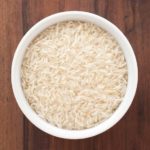
A good Biryani should have separate but fully cooked long rice grains. Type of rice is also significant, use basmati rice or sella basmati rice. Brown rice is good for pulao or khichri but not Biryani. Actually, basmati rice absord a lot of water. So when you boil rice in spiced water. Basmati rice grains absorb flavor and aroma adequately.
3. Soaking Rice
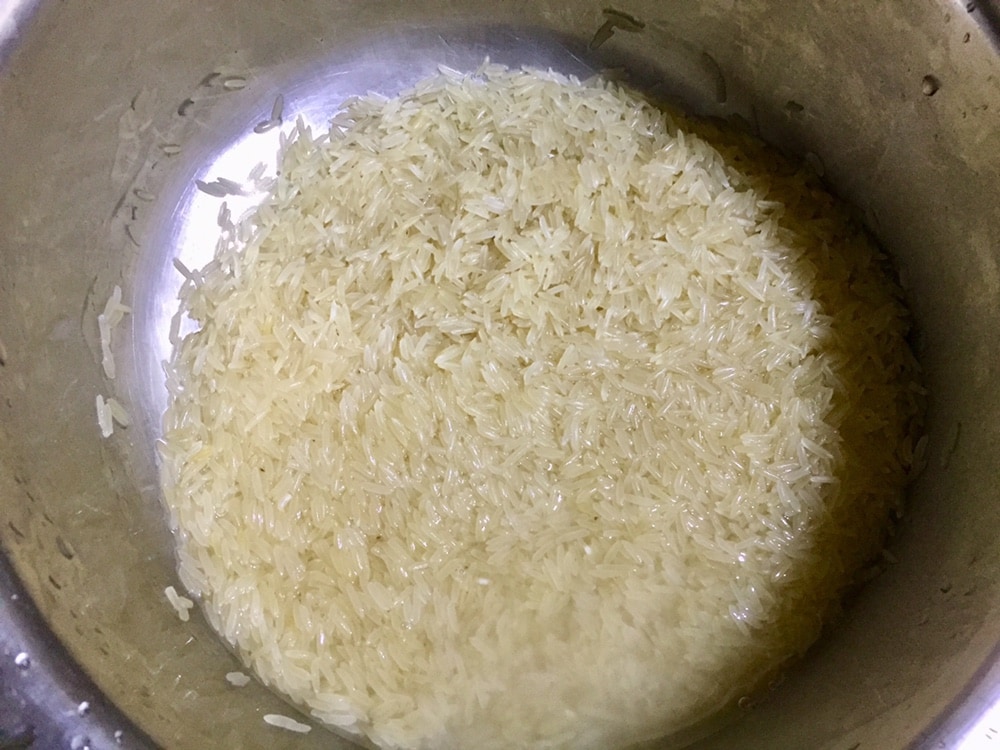
Soaking raw rice before boiling let's the rice puff up completely. Basmati rice require a minimum of 20 minutes soaking while sella rice requires about 45 minutes soaking time. Always check the pack for cooking instructions.
4. Salt
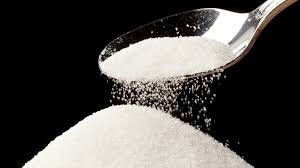
Salt is most important taste enhancer in any food. If your rice lacks in salt, biryani will lack completely in flavor. To know whether the salt is enough in water for boiling rice, taste the water, it should have a soupy salt level.
Salt is most crucial in flavor of every food make sure you use salt in all steps; marination of meat, making gravy and frying potatoes. But that's doesn't mean you over do.
5. Thick bottomed and wide skillet
Always use a wide and thick bottomed pot for Biryani. You can also put rice pot on griddle/tawa if your skillet has thin base; to save rice that are at the bottom of pot from burning. Keep the griddle/tawa under the skillet for re-heating biryani too. Always re-heat biryani on medium or low flame.
6. Cooking time:

For perfect biryani look every grain of rice should be separate. The overcooked meshy rice is nightmare for any biryani lover. Make sure rice are semi cooked about 70% cooked. After soaking, boil Basmati rice for 10 minutes or less. Always check for visual signs.
One tip to test doness of rice is to mesh a grain of boiling rice between thumb and finger to check doness. You should have two tiny 'Kani' bits of unmeshed rice left. That is called '2 Kani chawal', and considered ideal for biryani. Rest of rice cooking happens in Biryani pot where rice absorb flavours of meat and spices.
Cooking time can vary upon type of rice so checking the pack for instruction is best way to know.
7. Spiced water for cooking rice
Biryani rice are flavored with spices and are full of aroma. This is attained by boiling rice with whole spices and salt in large pot with plenty of water.
Best way to do this is boil water with salt and whole spices like cumin, cardamoms, pepper, bay leaf etc. Stir well till you see a little change in color of water. Then add soaked rice and cook for 10 minutes or less until rice are 70% cooked or reach '2 Kani' stage.
If you are new to Indian cooking you'll like next few tips. Whole spices like pepper, bay leaves, cardamom are for aroma only, they release their juices and flavors in rice. Do not bite them. Just put aside like you do with bones.
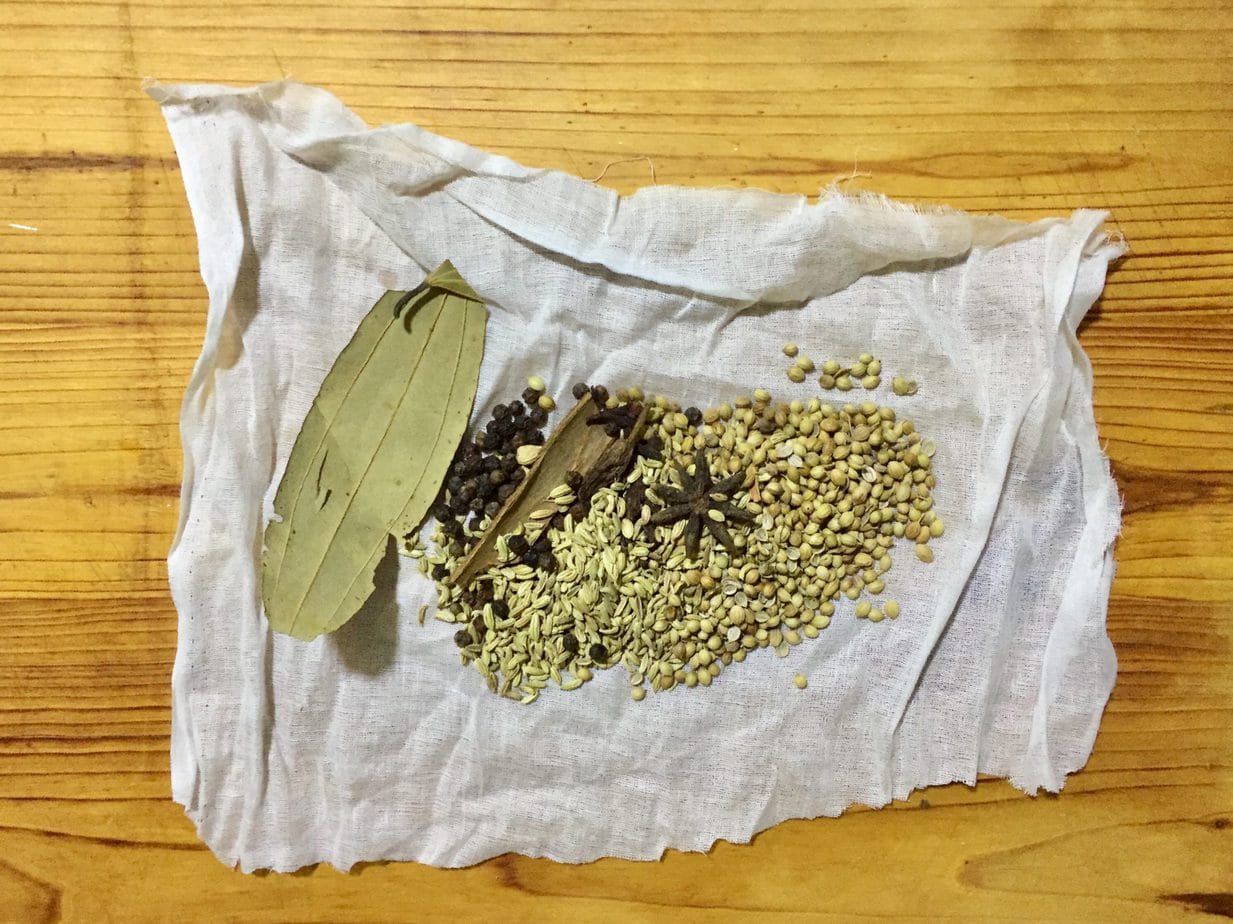
If you don't like whole spices in rice, you can also wrap these spices in a muslin cloth to form a spice bag. Just remove spice bag before serving.
8. Make ahead Biryani Korma
You can make korma gravy of Biryani a few hour ahead or even a day ahead. In that case the fried onions will puff up and soak water so add ¼ cup extra water or more if gravy is too dry. Korma gravy should have thick juicy gravy. It shouldn't be dry.
9. Bhunnofying
There are different types of Biryani. Some Biryani call for making a rich korma gravy. A delicious korma is one which is 'Bhunna' well. Some Biryani like Degi Biryani call for frying meat with spices until color changes to golden. This is also 'Bhunnai or 'bhonofying'.
Bhonofying means cooking on high flame till most water dries and oil clearly separate on sides of pot. This step is most crucial through out Pakistani cuisine. If you Bhunofy it correctly, it will be finger linking good. Only problem for bhonofying is you need to add a bit extra oil so it gravy or korma doesn't burn.
- Dum ( steaming) | how to Dum Biryani on gas
Steaming is most important step of biryani making. When you assemble meat and rice with other ingredients in biryani pot. The rice that are under cooked absorb the gravy moisture. As the pot gets heated the moisture from gravy rises and form steam. This steam needs to be trapped in the pot so rice puff up in this aroma filled steam. This is called 'Dum' technique of biryani. To achieve this you seal the pot by one of these ways.

For this either use a tight lid and put some weight on top (easy and practical method)
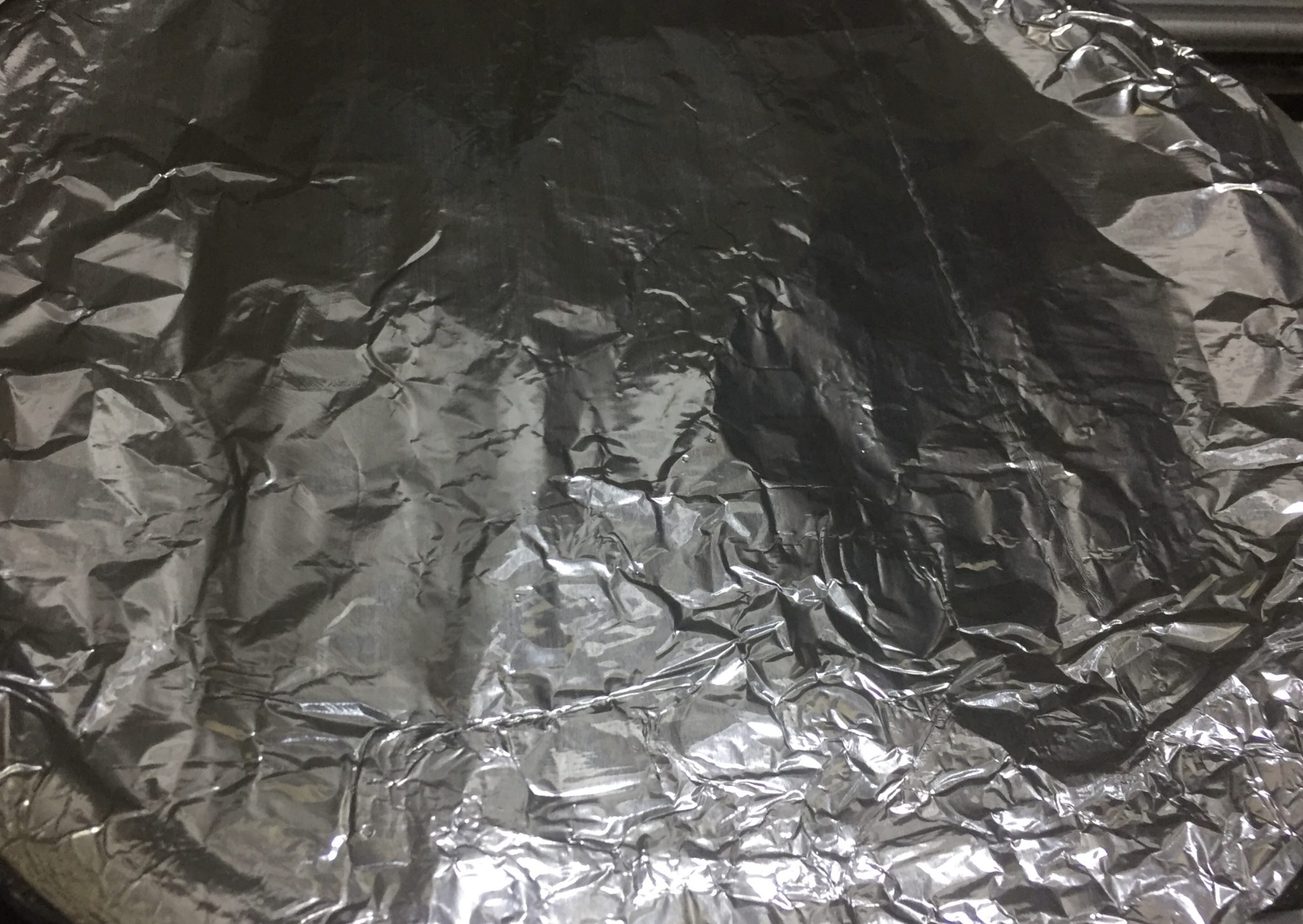
Cover pot with aluminium foil and then place lid (commercially used method)
Or seal the edge of pot with roti dough (traditionally used method)
The biggest secret is dum right before serving. Fresh biryani right after dum tastes best, just like freshly baked cookies, you can't resist over eating.
11. How to fix Hard and dry biryani rice.
Now, we all have bad cooking days when you have under boiled or over boiled rice below is the tips how to handle.
Hard rice
If your rice are very hard which mean they are under cooked when assembling the Biryani pot, you can add extra water in dum to soften but remember the gravy also has some water.
Soft rice
If your rice turn a bit softer or over cooked. Dry out your Biryani gravy also called korma a bit and add little or no water in Dum (Steaming). Also don't leave Biryani for very long on Dum.
12. Lack of spices
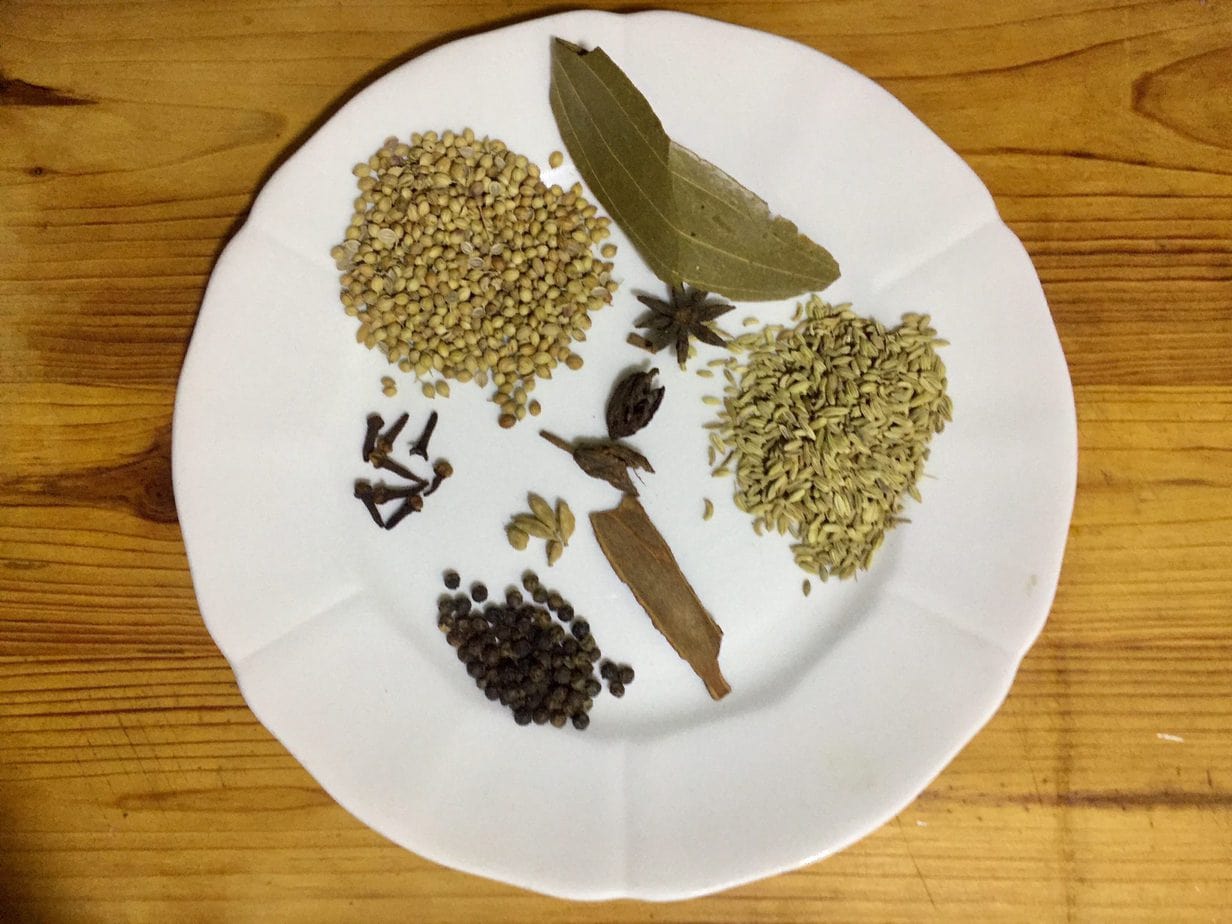
If you don't have one or two spices like, bay leaves and black cardamom, its ok. You can skip them. And use garam masala powder or chat masala or just extra green chillies. Although, some spices like black cumin and saffron really change the aroma and taste of biryani. But, if you have just few basic spices, like cumin, turmeric, pepper and cinnamon etc you can begin Indian cooking with these.
13. Fried onions
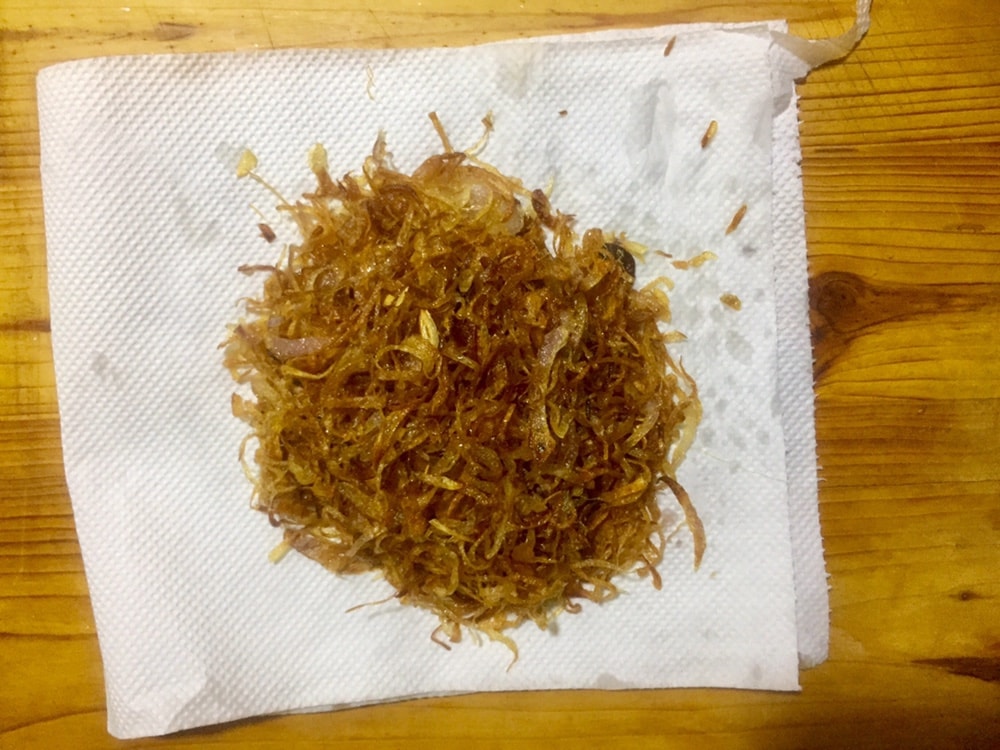
Neither dark nor soggy; since, we use tons of fried onion in Biryani, if your onion slices are over cooked, dark or burnt your Biryani will taste burnt and will have dark stale color. If onion slices are under cooked and not golden, they will not be delicious.
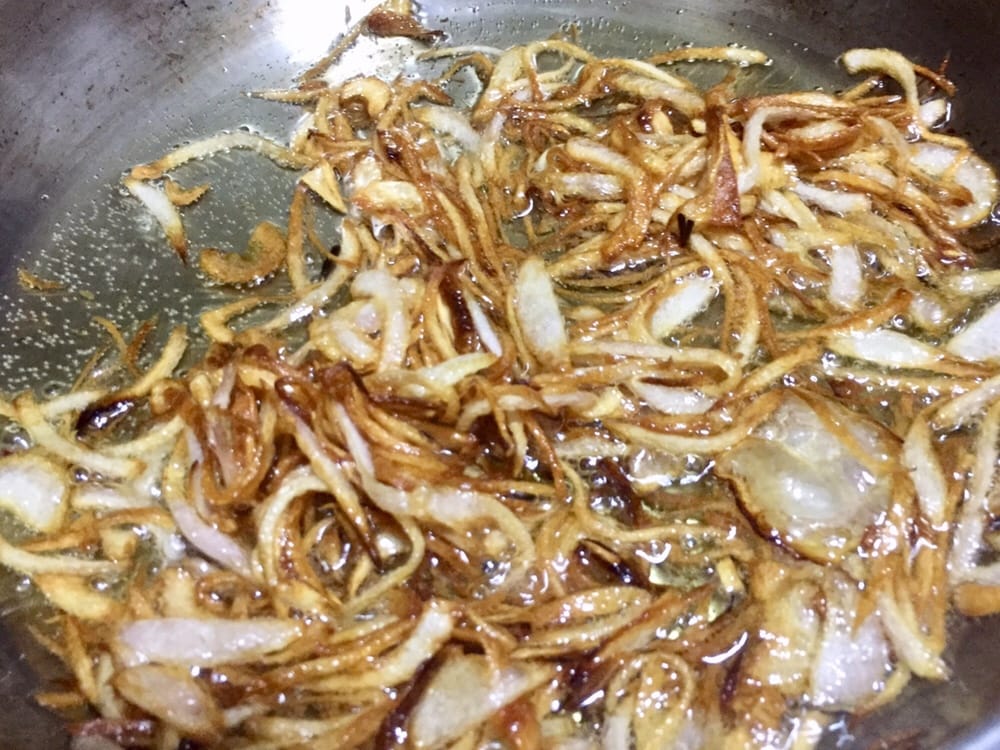
One visual sign is as soon as your onion slices start to separate clearly in oil with light golden color, they are ready.
- Some recipes call for adding spices directly in fried onions without cooling or crushing it so follow the recipe instructions.
- If directed in recipe lift them with a slotted spoon and dry over kitchen towel. Do not crowd them, spread a thin layer of onion slices and let it get cool and crispy. You'll get your perfect onions.
Another useful and general tip for frying crispy onions is onion slices should be very thin. Deep fry onion slices in large pan or wok over medium flame.
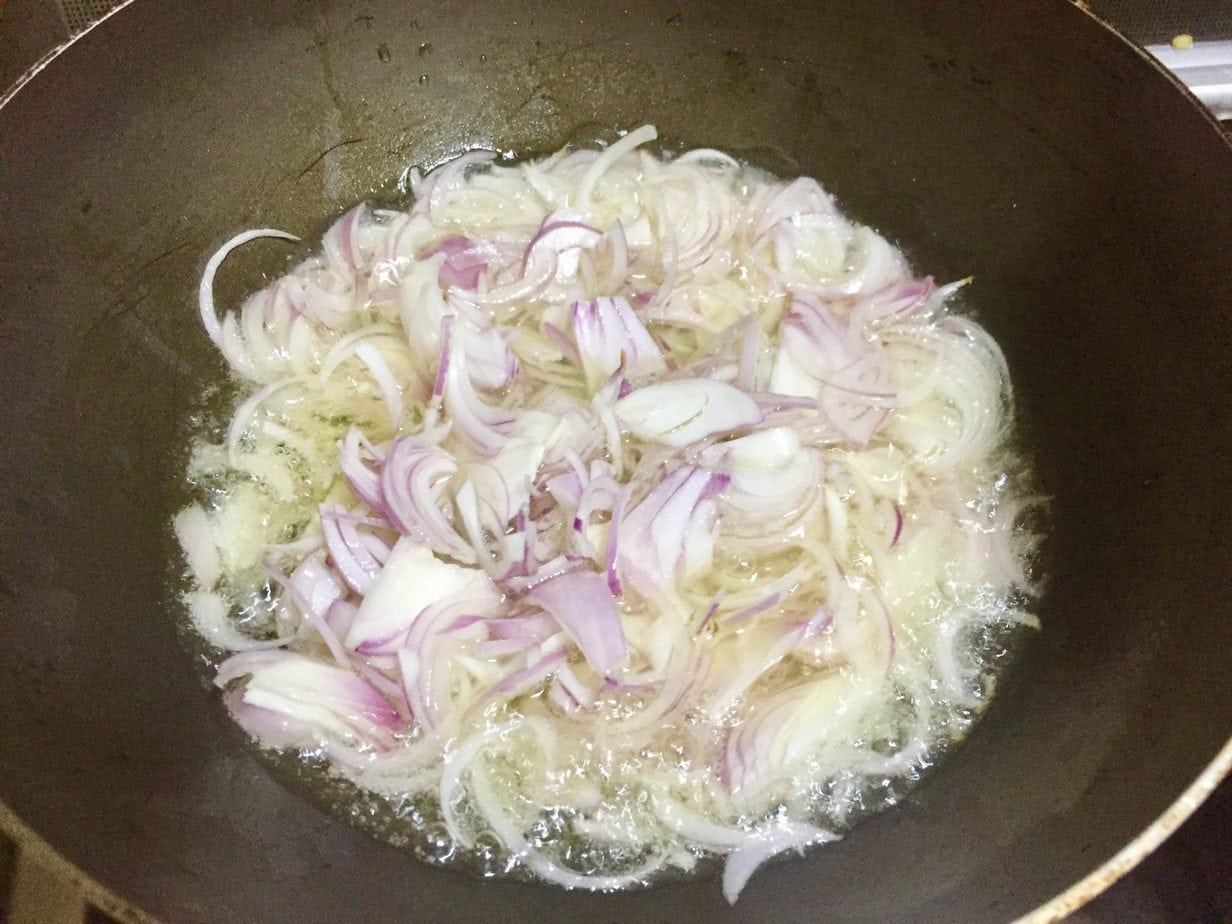
Add ¼ teaspoon or less salt in oil. Always fry onion slices in small batches.
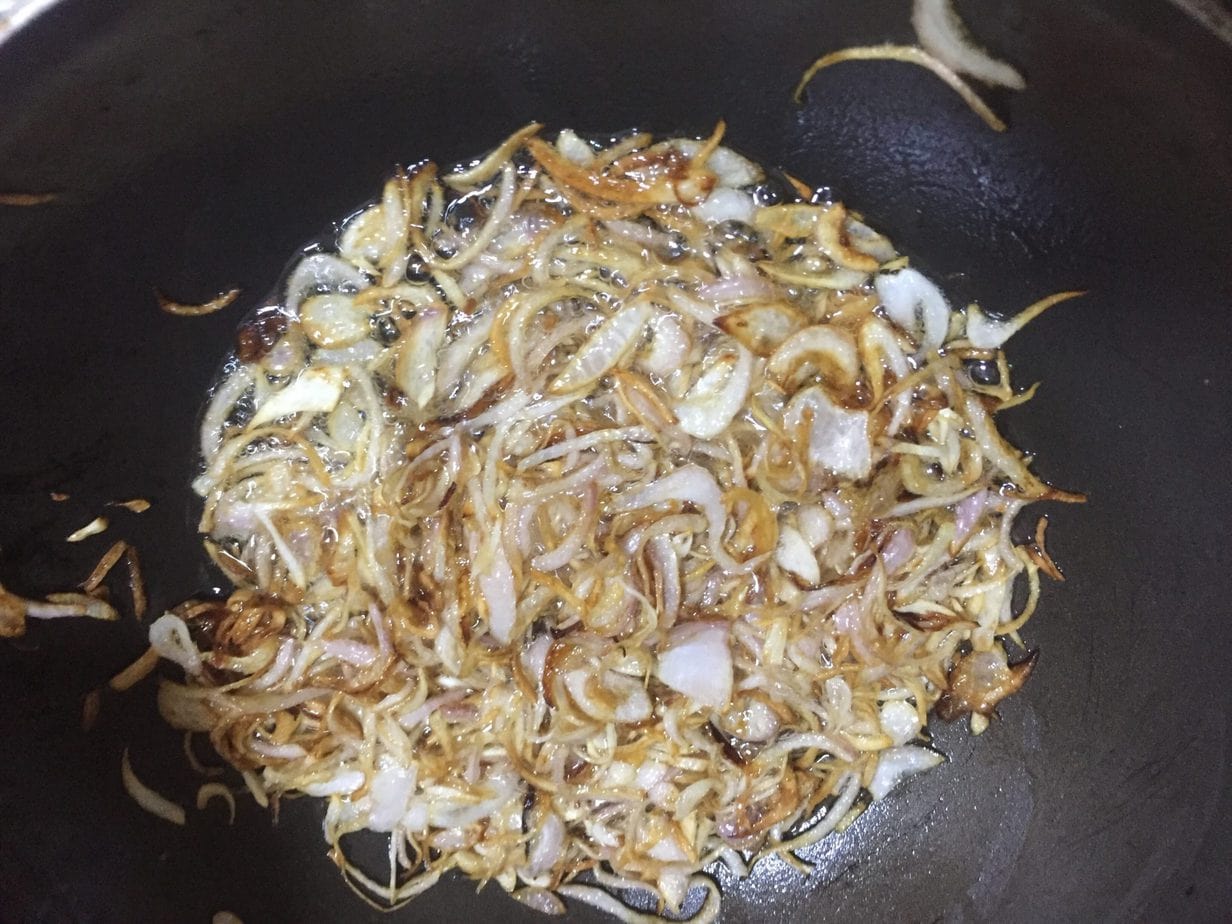
After onions slices start to separate like in above photo. Pick them with slotted spoon and transfer over a strainer.
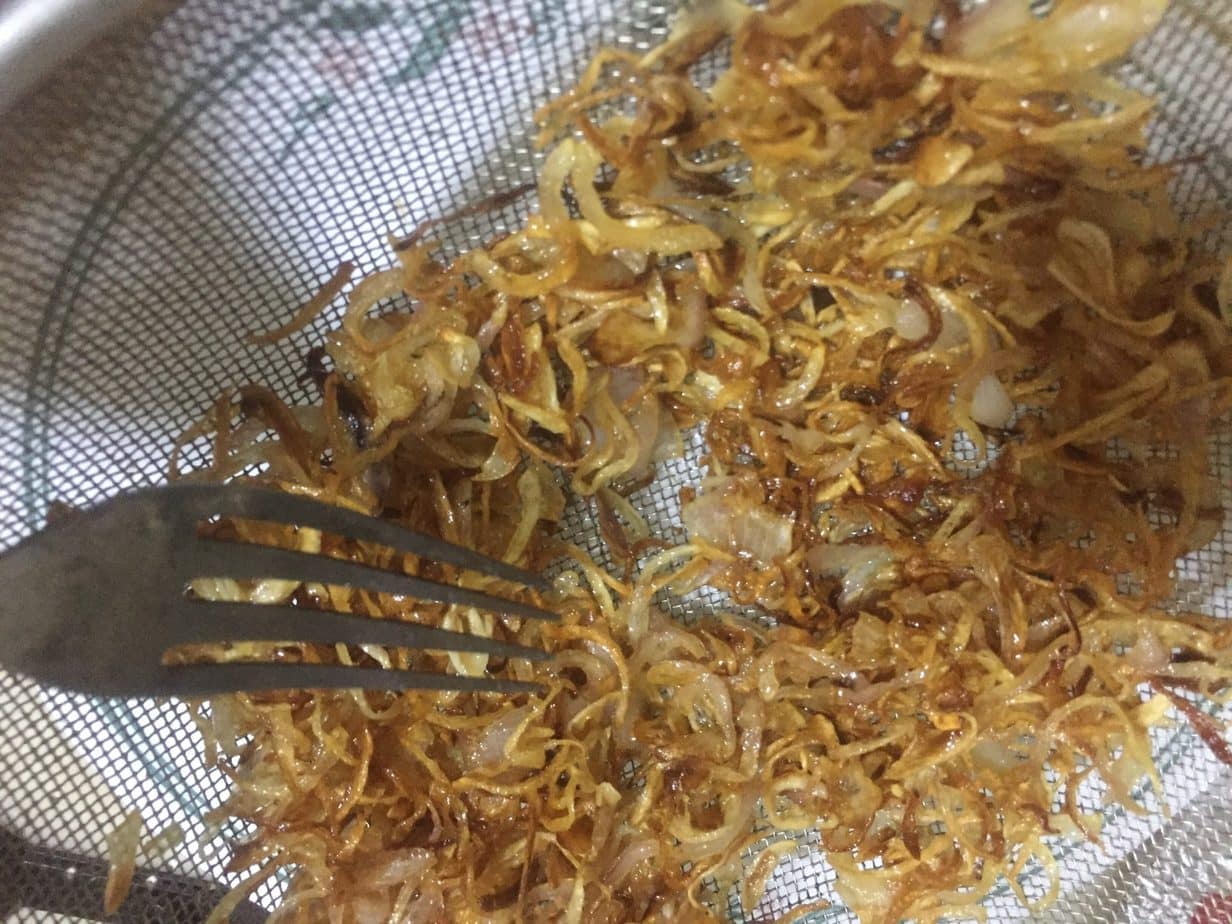
Shake the strainer to cool onion slices and shed any remaining oil lingering over it. Transfer slices over kitchen towels to cool completely.
Now use as required in a recipe. They'll be crispy and you can crush them with hands. You can store these in an air tight container for later use. Fried onion make great garnishing over almost any Indian dish.
14. Amount of oil

The oil, I use in my recipes is least possible with authentic flavors but real biryani calls for even more oil or ghee. So be generous in oil when making Biryani. When traditional mutton biryani is cooked, fat pieces (riwaj) are also added with meat for meaty flavours and greasy moisture. This is 'degi' or 'Dhaba' Biryani secret tip.
15. Serving Estimation.
Another important thing about Biryani is estimation. As Biryani is often made for 'dawat' or formal dinner having a correct estimation of meat to rice is critical.
Or how many kilograms of Biryani for a certain number people can really help overcome stortage of food that is so embarrassing. Or wastage of food which is so difficult to distribute or dump in the worst case.
Biryani made with 500 grams raw rice is enough for 8 average person, if it's a single course meal.
And 250-300 grams raw rice biryani is enough for 8 people, if it’s a three course meal, 1 dessert, 1 savory dish with roti and 1 rice main course.
But these estimate need to be adjusted if all invited are youngster with large appetite or oldies with small appetite.
One very old and traditional method of measuring rice for serving is a fist raw rice for each person. 1 and half fist of raw rice for people with large appetite and ½ fist for children. You measure rice according to invitee and soak rice. This seems crazy way to calculate and quite secret way used by grannies but works very well.
If using above methhod, most of calculation of meat, onion and potato and other ingredients are done with visual estimation. These advanced cooks only follow the method of a recipe and don't care about measures. But this is advanced cooking level, not recommended for newbies.
16. Accompaniment:
Indian / Pakistan food is all about combos. Raita ( yogurt sauce) is must with any Biryani. A little effort will show high rewards in term of praises like 'wah' , 'maza agaya'
Lastly, if it still isn't perfect. Remember, a pot of freshly steamed rice and meat along with kachumber salad, raita and a few chutneys here and there can never be boring. So that'll surly save the day.
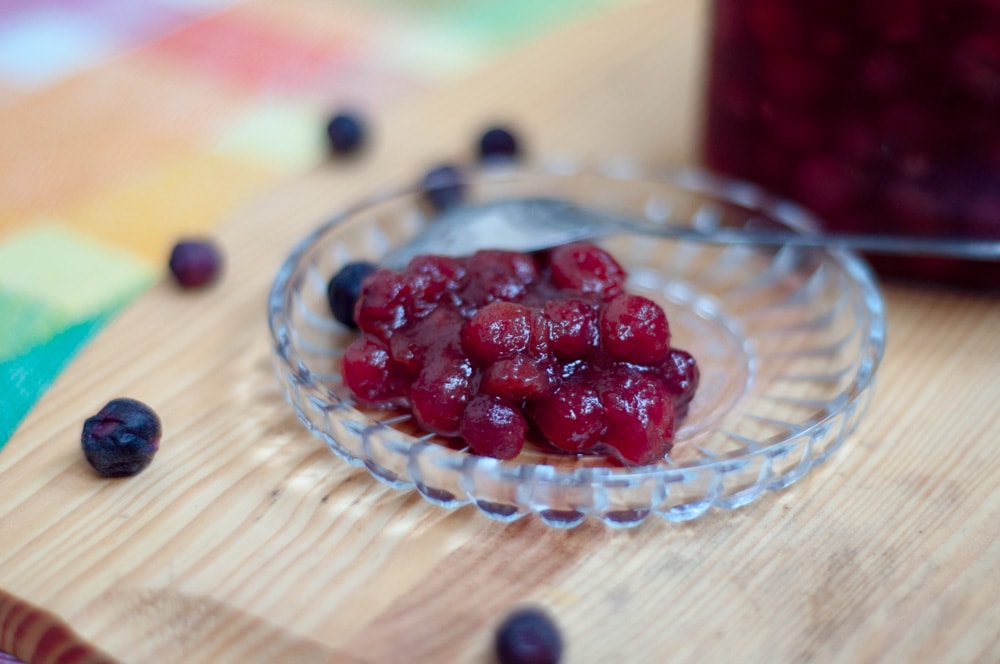
A little common sense and bit of experience will make you pro biryani cook. Good Luck and don't forget to give ?? in comment if you enjoyed the post.
Are you a pro Biryani cook? Share your tips in comment and help others. Check my biryani recipes.


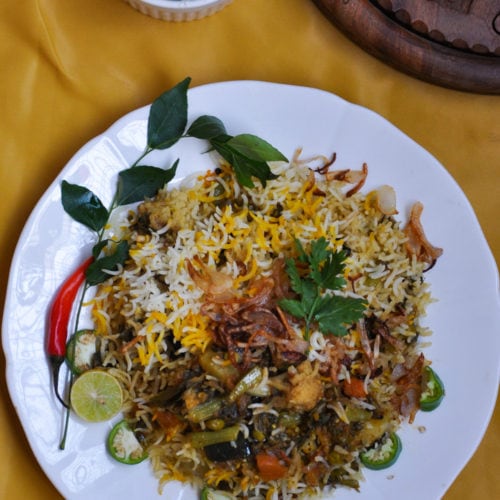
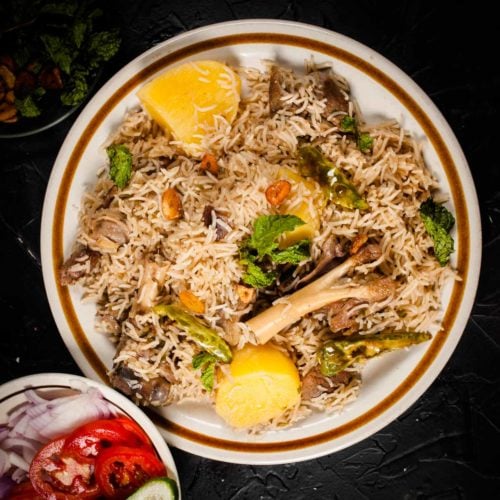
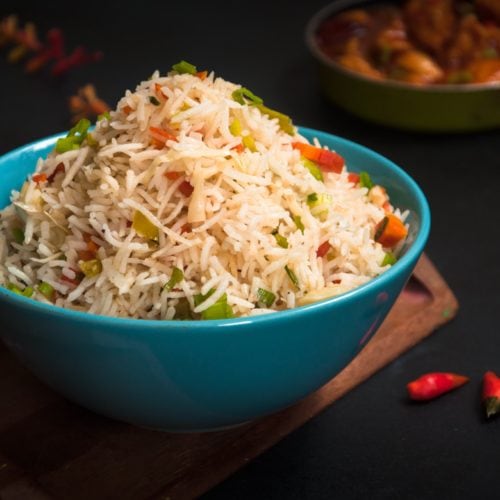

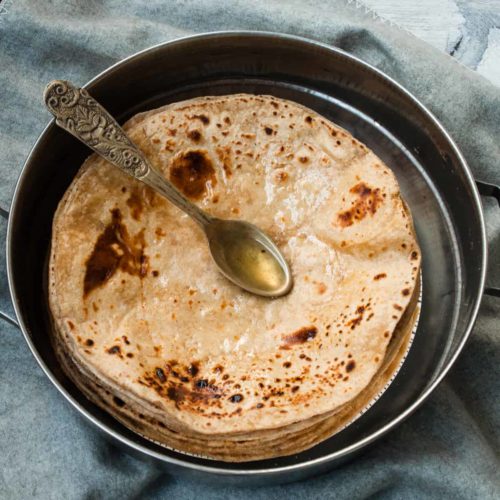
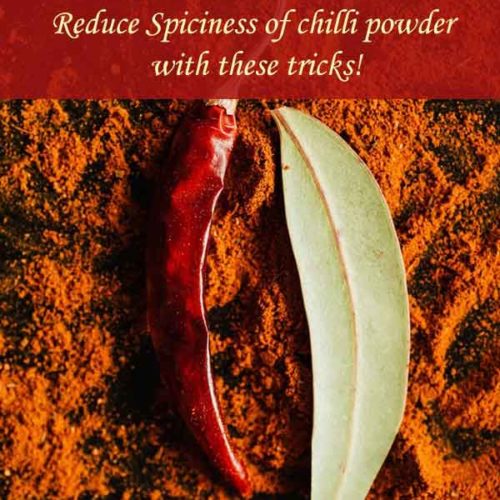
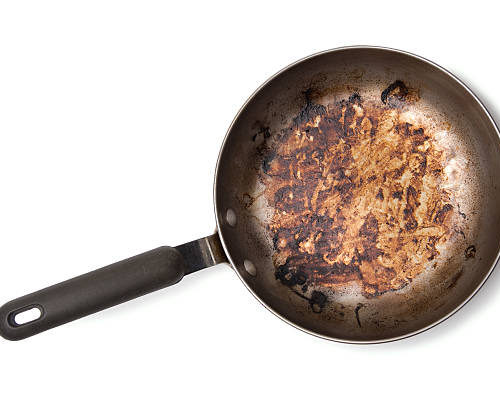
Rashida Husain says
As you have mentioned above ratio of meat to rice is 1:1
So for 1 kg meat has to be 1 kg rice.
Now my question is 1 kg rice is cooked rice or raw rice?
Please reply
Recipe 52 says
1 kg raw rice to raw meat.
But that’s again the minimum and low low meat Biryani.
If you are meat lover than 1 kg raw rice to 1 and half kg meat. That’s the meat ratio you get in shadi ki biryani in jumaat khana.
Hope this helps. 🙂
Najwa Paracha says
Wow your article is so good following your news.
Recipe 52 says
Thanks a lot for feedback.
Supriya Kutty says
Thank you so much for revealing all the secrets as I always tried my best to make delicious biryani but always failed I don't know the reason why but now through your post I will best evaluate my mistakes and again will try making the best one.
Recipe 52 says
Thanks a lot for your kind words. Good luck!
Maria says
Hi
When I make biryani using basmati rice, the rice in the biryani becomes dry once the biryani is done.
How to avoid dry rice in the biryani?
Recipe 52 says
Use more fried onions for gravy in korma.
Make sure the korma has some gravy and it is not too dry.
If making beef or mutton biryani, do not trim all fat, add few fat pieces too.
Add extra oil in Biryani.
You can alway drizzle little water on Biryani and steam or dum again for softer rice.
Hope all these tips help.
Maroa says
Yes
Definitely
Thanks a lot
Chitra says
Sometimes my biryani turns out dry. Not moist enough. The gravy seems to dry up after I have layered and steamed the the rice and chicken together. How do I correct it once it turns out like that?
Recipe 52 says
Many people fear that water in chicken gravy can make the rice soggy. So they dry out too much water in gravy.
1. For biryani we need a korma like gravy.
2. You can add up to ½ cup water in Biryani pot when placing for dum for a moist biryani. If rice are over-cooked then avoid it.
3. Biryani needs a lot of fat in the form of animal fat from meat or in oil that we add in gravy. If you remove all the fat carefully from meat. This can also reduce fat in Biryani. If you add very little oil in gravy and avoid drizzling 1-2 tablespoon oil on the final layer. (when we put food color too) You are cutting too much fat in Biryani making it dry and tasteless.
If your biryani is dry and rice are slightly hard. Add ¼ -½ water in Biryani by drizzling it all over the rice to make it wet evenly. Cover the pot and let it dum again.
Rashida Husain says
Ratio of rice to meat is 1:1
So for 1 kg chicken it should be 1 kg cooked rice or raw rice ?
Recipe 52 says
Raw rice.
See rice expands and chicken shrinks upon cooking. So 1:1 is minimum for a Biryani. If you want meaty biryani add more chicken or mutton.
Samira Munshi says
I made biryani last night for dinner. Taste wise it was yummy but it cane out less spicy. Is there anyway i can make it spicy now as it is already cooked??
Recipe 52 says
You need to use your best judgement here as I have no clue what your Biryani looks like. This is what I would do.
*Add a little biryani masala (readymade spice mix or any curry masala like Nihari, korma that you have in hand)
*few green chilli slices
*little fried onion
*and mint leaves in Biryani. Give it a careful stir with just 2-3 strokes.
Sprinkle few tablespoons of water over Biryani. Reheat completely and serve. Good luck!
Chinu says
I love the use of languages and Indianism or Pakistanism in this post I love the post thankyou
Recipe 52 says
Thanks you so much fo the sweet words. That’s the best comment I ever got on this blog.
ABHILASH Nair says
Bhunofy. That aint a cooking term... Braising is the word. Its searing the meat first in high flame n then simmer it in its own juices
Recipe 52 says
Hi Abhilash,
Yes, I coined this term bhunnofy so definitely it’s not a term. ?But, it translate the meaning to most people of desi origin clearly.
I really value your comment and will use the accurate terms along with bhunofy in bracket. So people of non desi origin also have clear instructions. Have a nice day.
Pawani says
At what stage do I have to add yoghurt and Potato? How about the quantity for 1kg of rice?
Recipe 52 says
Depend on Biryani recipe.
Yogurt can be added in marination where it help tenderise meat too. Or you can add yogurt in the last and simmer it for few minutes and gravy is ready.
For potato also it depends on recipe. Some pool potatoes separately specially for chicken biryani as chicken as short cooking time.
Or you can fry small potatoes chunk separately. Then add over gravy layer when assembling biryani for dum.
If making red meat biryani, you can add large potato chunks when meat is almost cooked and let potato cook in meat gravy.
Just stick to recipe you are following for easy guide. I try all above methods as per my convenience.
Recipe 52 says
Quantity can be ½ to 2 cups for 1 kg biryani. If biryani gravy has tomatoes too. Then you add less yogurt.
For potatoes, I say it is personal choice if you love potatoes add 3/4 kg potato in 1 kg biryani. Some would add just 2 potato.
Best way is to go by visual for potato. Keep meat, and potato in two plates and judge visually. Potato lover will want same visual volume for meat and potato or more. And normally you add half the potato as meat, visually. Remember meat shrink as it cooks and potato stays same.
I hope, I was able to explain well as there is no one word answer.
Pawani says
Thanks for Ur tips. Really helpful.
Pratikshya says
Thank you for such scientific and amazing tips.. cooking biryani is an art as well as science at the same time.. :).. I have one question though.. is there q specific way to dum.. i mean i have read in couple of other posts that you need to first put the sealed pot on high flame for 6-7 minutes and then transfer low flame that too on a roti tawa and not directly
Recipe 52 says
Hi Pratikshya, I'm so glad you find the post useful. Yes, you are absolutely right about the dum method. This post needs an update so many amazing commenters like you have pointed more details. I'll definitely include those tips in the update. 🙂
Nike says
Is it updated?
G S A I Mahesh says
What we do if biryani spices are high in prepared biryani. How to reduce that spice?
Recipe 52 says
Add more cooked rice to reduce masala. Mix rice in the Biryani but be very careful while mixing just 3-4 strokes with a large spoon.
Now there might be less protein (chicken, meat) so add boiled or/and fried potatoes too along with rice.
Heat biryani throughly and serve. I’ve tried it myself.
G S A I Mahesh says
Thanks for the advice